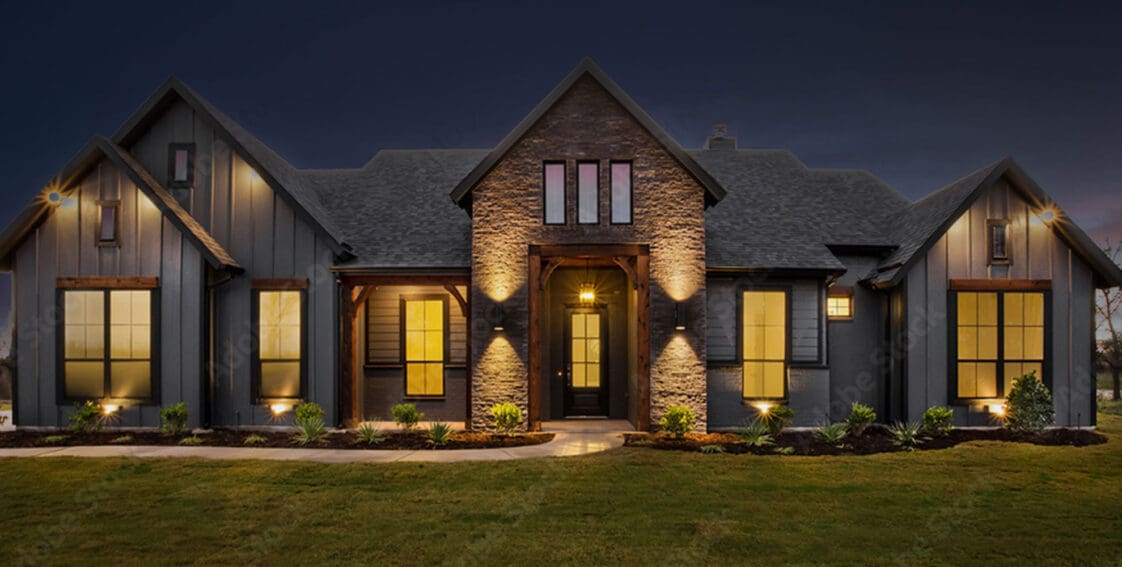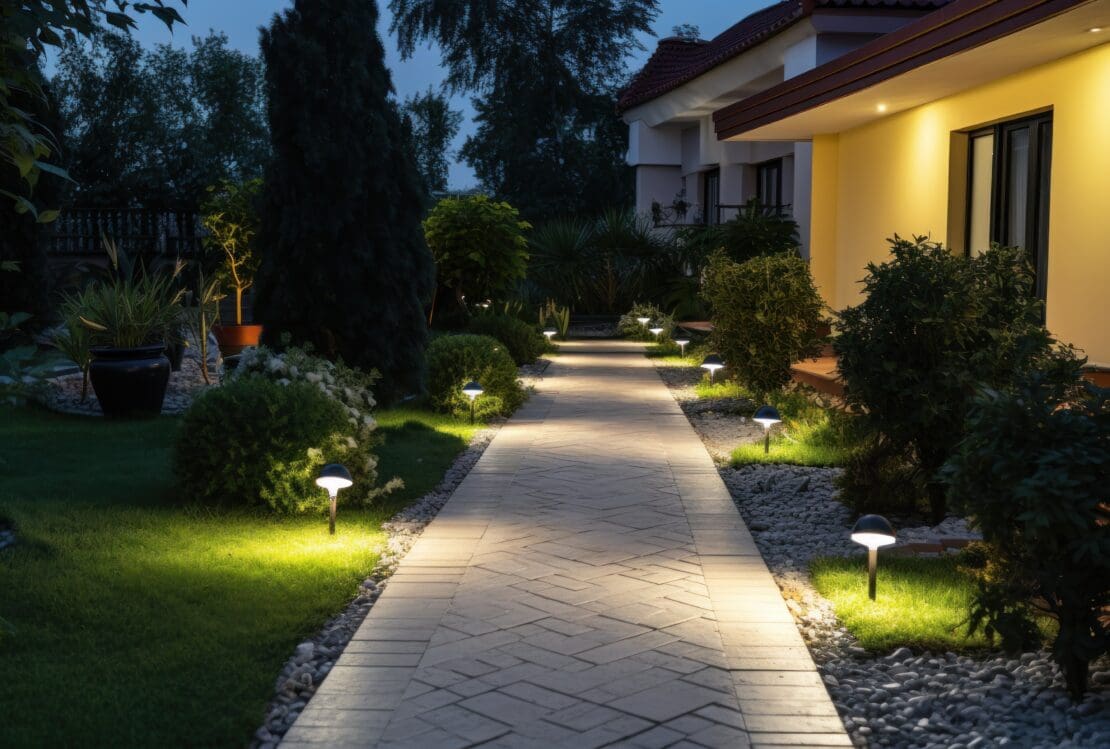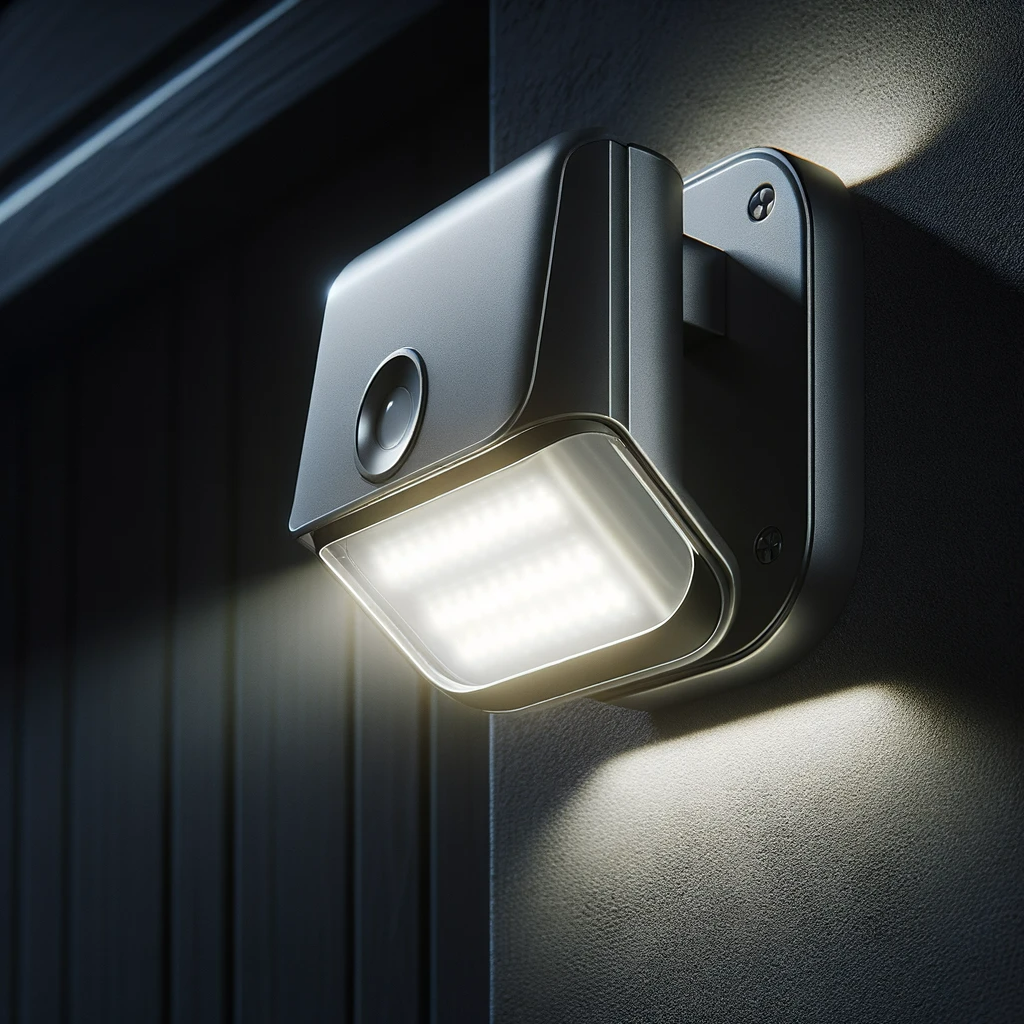
Outdoor lighting is more than just a functional necessity; it offers a multitude of benefits ranging from enhanced aesthetic appeal to improved safety and security. Understanding the basic concepts of outdoor lighting can help you navigate the vast array of options available and make informed decisions for your home or business.
Where to Place Landscape Lighting

The most commonly lit areas in outdoor spaces include pathways, driveways, entryways, patios, and landscaping features. Pathway lighting ensures safe navigation, while driveway and entryway lights provide a welcoming entrance and deter potential intruders. Patio lighting extends the usability of your outdoor living spaces into the evening, and accent lighting for landscaping features like trees, gardens, and architectural details can add drama and beauty to your property.
Light Types & Colors
When it comes to bulb types, LED lights have surged in popularity due to their long lifespan, energy efficiency, and low heat emission. Halogen bulbs are another option, known for their bright, crisp light, but they tend to have a shorter lifespan and higher energy consumption. Incandescents are the older, less efficient option, but they offer soft, warm lighting that makes for comforting accents.
Color temperature is another crucial aspect of outdoor lighting. Bulbs with a warm white color temperature (2700K to 3000K) create a cozy and inviting atmosphere, while cooler temperatures (3500K to 4100K) provide more refreshing,clean light. Colored lighting can also be used for special effects or holiday decorations.
Lighting for Different Effects
Strategic placement and choice of lighting can create various effects. Use a mix of downlighting, uplighting, cross lighting, and silhouetting to create a dynamic lighting experience for you and your guests.
Downlighting
Refers to light shining down on an object. Downlighting can mimic moonlight filtering through branches, providing gentle illumination.
Uplighting
Uplighting, when lights are shining upward, adds drama to the landscape by casting shadows and highlighting textures.
Cross Lighting
A mix of down and uplighting, cross lighting eliminates shadows and showcases the intricate details of landscaping elements.
Silhouette Lighting
Lighting one side of an object casts a silhouette onto fences or hedges, adding an air of mystique with arresting outlines.
Technological Features

Modern outdoor lighting often incorporates sensors and smart technology for convenience and energy savings. Motion sensors can trigger lights to turn on when activity is detected, providing security and saving energy by lighting areas only when needed. Photocell sensors detect ambient light levels, automatically turning lights on at dusk and off at dawn.
Solar-charged lighting is an eco-friendly option that stores energy during the day, eliminating the need for wiring and reducing electricity usage. Many solar lights now come with backup batteries to maintain illumination even after several cloudy days.
Cost Considerations
Here are a few main factors that will affect the cost of your outdoor lighting project:
Fixtures
Basic stake lights for pathways might be relatively inexpensive, while high-end, designer fixtures made of premium materials can be quite costly. Solid brass or copper fixtures designed to patinate over time will be pricier than standard aluminum models but offer a more distinctive look and longer lifespan.
Bulbs
While LED bulbs are typically more expensive upfront than halogen or incandescent bulbs, they often pay for themselves over time through energy savings and lower replacement costs. LEDs can last for years, while traditional bulbs may need to be replaced annually.
Solar Power & Other Technology
Solar-powered lighting can reduce energy costs and eliminate installation expenses related to electrical wiring. However, the lights themselves may come with a higher price tag compared to traditional lighting.
Smart technology integration for remote control and scheduling can also add to the initial investment. These systems are convenient and can help reduce energy costs in the long run. However, they require a larger upfront cost for both the technology and the professional installation.
Brilliant Nights–Your Landscape Lighting Partner
There’s a lighting solution for every property and budget. If you need help finding yours, contact Brilliant Nights Design today.
